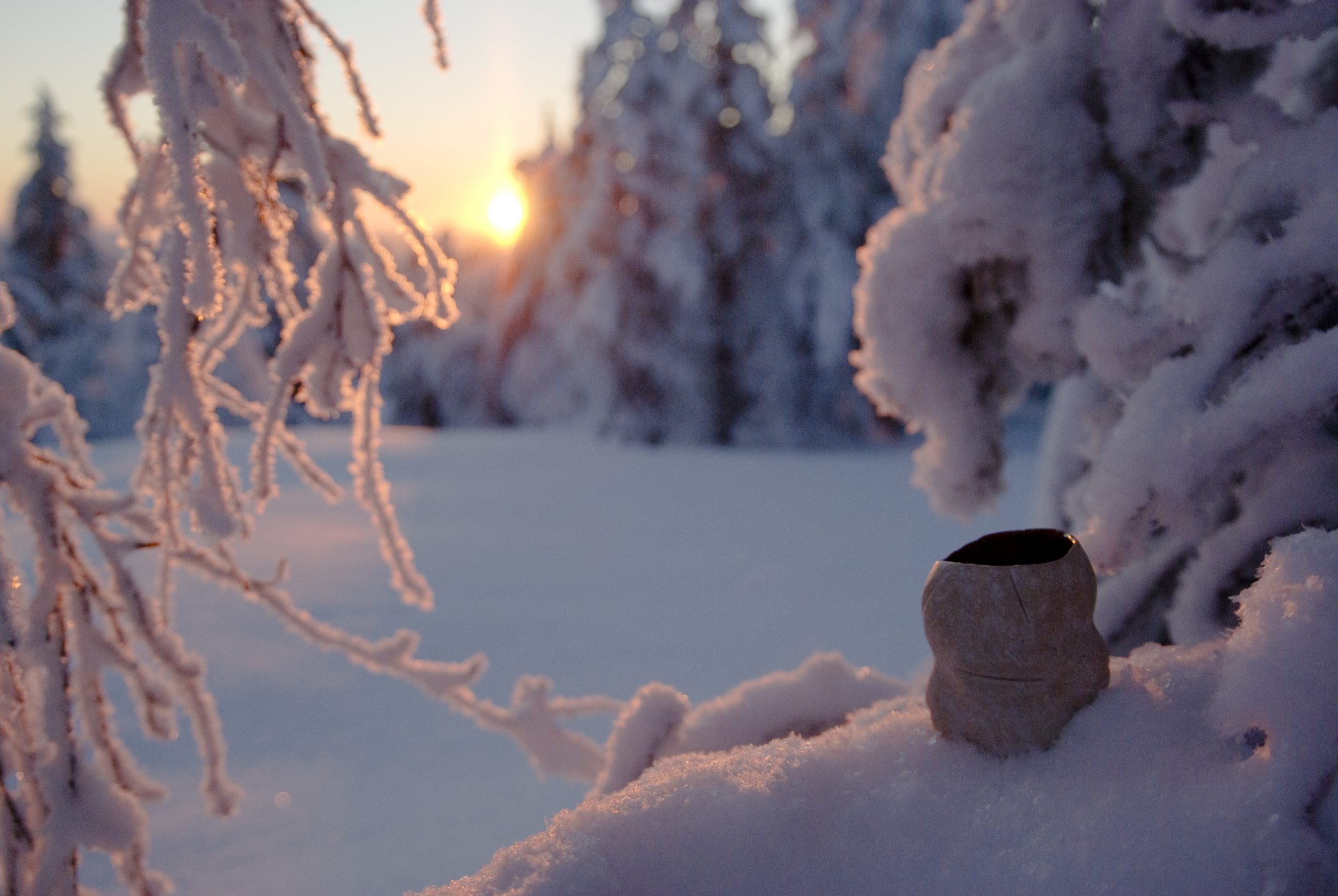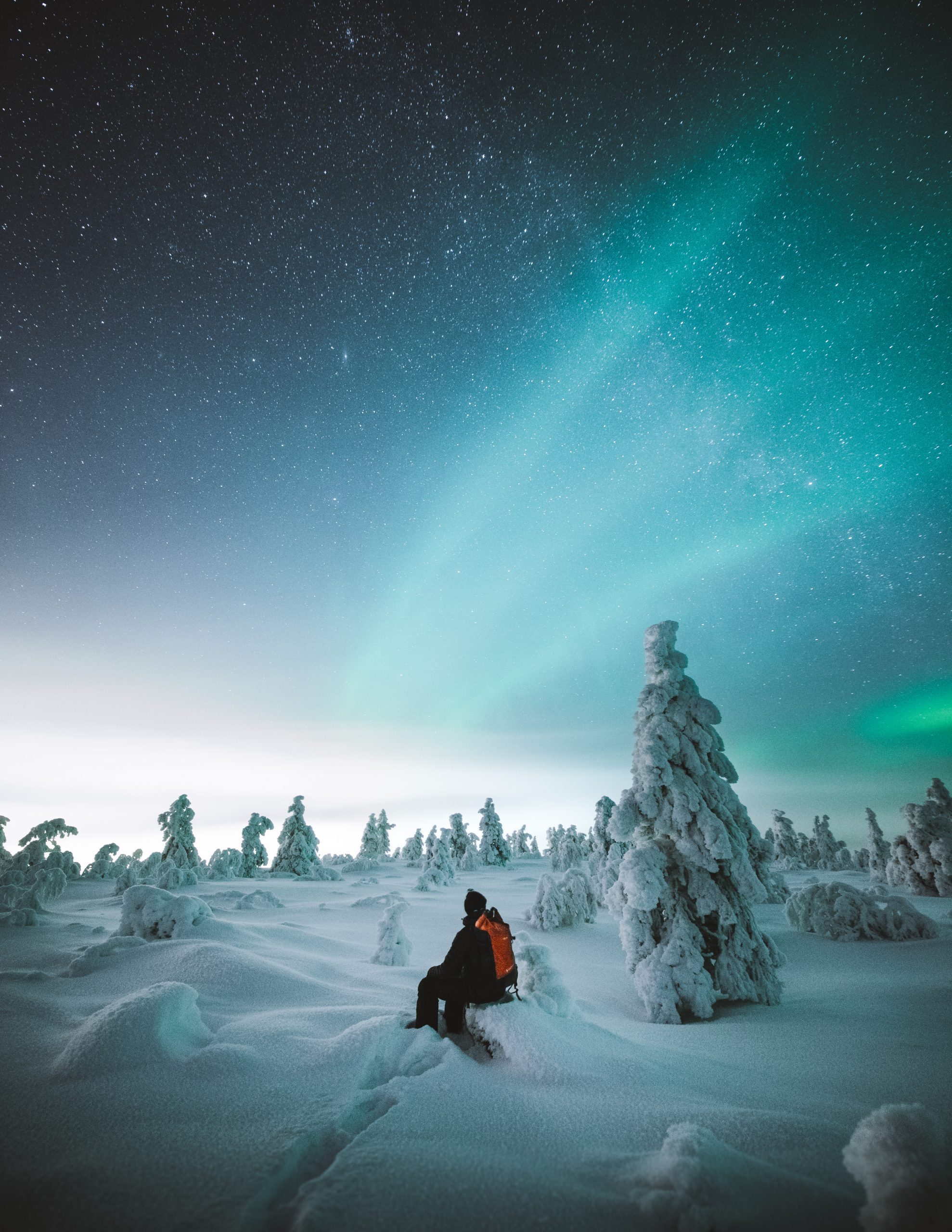By Ella Larina
If you’re planning a Christmas getaway, Finland has all the answers: not only is it the home of Santa, but it also provides a fresh, sustainable approach to travels with its Sustainable Travel Finland program.
Climate change and the global pandemic have highlighted the urgent need for holistic sustainable travel practices to be implemented in order for the travel industry to survive in the future. Visit Finland’s nationwide Sustainable Travel Finland program aims to make sustainability and responsible travel the new norm. Posio in Lapland is the first travel destination in Finland awarded the program’s label.
 Finland is a small country on the global scale, yet it is among the top 10 sustainable countries in the world (Environmental Perform Index). Almost 80% of Finland’s land area is covered by forest, it has the richest freshwater resources in the EU in a total of 188,000 lakes and the cleanest air in the world.
Finland is a small country on the global scale, yet it is among the top 10 sustainable countries in the world (Environmental Perform Index). Almost 80% of Finland’s land area is covered by forest, it has the richest freshwater resources in the EU in a total of 188,000 lakes and the cleanest air in the world.
Finland is the happiest country in the world according to the World Happiness Report from 2018, 2019 and 2020, the best country in the world in a comparison of human wellbeing (Sustainable Society Index in 2016) and it’s committed to becoming the first carbon-neutral welfare state by 2035. In Finland, the travel industry, as well as nature and everyday life, rely entirely on changing seasons and a lifestyle close to nature.
Visit Finland launched The Sustainable Travel Finland program in with the aim of making sustainability a new norm in the travel industry and Finland one of the most sustainable travel destinations in the world.
“We want to nurture, conserve and preserve our pure and pristine nature, the Finnish lifestyle that is so firmly rooted in it, and our culture that celebrates equality,” explains Liisa Kokkarinen, the Manager for Sustainable development at Visit Finland / Business Finland.
Holistic approach to sustainability
The Sustainable Travel Finland initiative focuses on all four dimensions of sustainability: economical, ecological, social and cultural. The label is awarded only to companies and destinations that have undergone the entire Sustainable Travel Finland program and fulfilled the 7-step criteria including commitment to national sustainable tourism principles and drawing up a sustainable tourism development plan with short and long terms goals.
“While Finland is considered a sustainable country, thus far there has been no way of identifying a tourism provider that is committed to sustainable development. By choosing a STF labelled experience, a traveler can support local tourism efforts towards sustainability and ensure that his or her journey has a positive impact on the local culture and economy, while minimizing negative impacts on the environment,” Kokkarinen continues.
The popularity of the STF program has been overwhelming and exceeded all expectations Visit Finland set prior to the pandemic. More than 500 companies and destinations have already applied to be a part of the program. So far, 57 companies and 1 destination have completed the journey and have been awarded with the Sustainable Travel Finland label.
“Prior to the pandemic, tourism in Finland was growing fast and steadily, which is one of the reasons we are investing in sustainability so heavily. The pandemic has given us the time to build our readiness and once travelling can happen again, we should be able to welcome our international guests to a Finland that is stronger, resilient and sustainable,” says Kokkarinen.
Posio – the hidden gem of Finnish Lapland
Posio is a small nature-loving community with a population of a little more than 3,000 inhabitants in Lapland. It is the first travel destination to be awarded with the Sustainable Travel Finland label and it can also be found on the global 2020 Sustainable Destinations Top 100 list organised by the global Green Destinations foundation and its partners.
 In Posio enchanting landcapes inspire travelers to rediscover the essentials. The national parks of Riisitunturi and Syöte, Korouoma canyon, Lake Livojärvi, ”the riviera of Lapland” and Pentik-mäki cultural centre create unique surrounding for nature and culture travel.
In Posio enchanting landcapes inspire travelers to rediscover the essentials. The national parks of Riisitunturi and Syöte, Korouoma canyon, Lake Livojärvi, ”the riviera of Lapland” and Pentik-mäki cultural centre create unique surrounding for nature and culture travel.
“Posio is characterised as the hidden gem of Finnish Lapland. The local companies have actively nurtured sustainability in their operations for years. As a result of the Sustainable Travel Finland program, companies have adopted new sustainability measures like saving energy and water and they have increased the use of local food,” comments Marja Hannula, Managing Director of Posio Travel.
In Lapland, the carbon-neutral Pyhä Ski Resort has also been awarded the label and it is now aiming to become the world’s cleanest ski center. In other parts of Finland, travelers can find sustainable experiences such as Suomenlinna, which is the Unesco Heritage Site located on the coast of Helsinki, Aavameri which arranges multi day sea kayaking expeditions in Archipelago Sea National Park and Turku and Silent People Meadow Cafe and Restaurant in Lakeland offering outdoor exhibition and fire-brewed coffee and delicious butter-baked Finnish crepes.
“For travelers who are looking for responsible ways to experience the peace, quiet and purity of nature, authentic local culture, to feel safe and feel a sense of space – Finland offers all this,” states Kokkarinen.
Visit Finland launched Sustainable Travel Finland in 2019. After a one-year piloting phase, the program was opened to the entire travel industry in Finland in June 2020.
The label is only awarded to those companies and destinations that have undergone the entire Sustainable Travel Finland program and fulfilled the criteria. It includes regular auditing and renewal of the label and requires true commitment to sustainable development.
Initially, when setting up the Sustainable Travel Finland program, the current state, obstacles and requirements for sustainable tourism development in Finland were surveyed. The following areas for development were recognized: commitment, knowhow, planning, communication, auditing and measuring. Instead of adopting a “ready” international model in Finland, a national model was designed to address these needs, as well as regional differences.




